#Ada Vaughan
Explore tagged Tumblr posts
Text
"La Sarta di Dachau": Mary Chamberlain e il Potere della Resilienza in un Romanzo Intenso. Recensione di Alessandria today
Una storia di speranza, coraggio e sogni che resistono anche nei momenti più oscuri della storia.
Una storia di speranza, coraggio e sogni che resistono anche nei momenti più oscuri della storia. Biografia dell’autrice. Mary Chamberlain è una storica e scrittrice britannica, nata nel Regno Unito, nota per il suo lavoro accademico e le sue opere di narrativa. Laureata in Storia, ha pubblicato numerosi saggi accademici prima di dedicarsi alla narrativa. Il suo romanzo d’esordio, La Sarta di…
#Ada Vaughan#Alessandria today#Creatività#creatività e sopravvivenza#dignità#Donne Coraggiose#Forza Femminile#Forza Interiore#Google News#identità#italianewsmedia.com#La Sarta di Dachau#lettura avvincente#lettura storica#libri consigliati#lotta contro le avversità#Mary Chamberlain#narrativa contemporanea#narrativa femminile#narrativa internazionale#narrativa storica moderna#Pier Carlo Lava#protagoniste femminili#resilienza#romanzi bestseller#romanzi indimenticabili#romanzo coinvolgente#romanzo emozionante#romanzo ispiratore#Romanzo storico
0 notes
Text
I love women in stem
do YOU 🫵 love women in stem??
#riv’s stuff#women in stem#stem#feminism but as it should be#honoring the countless women whose discoveries and inventions made possible the world we know today#ada lovelace#hedy lamarr#cecilia payne#women in science#astrophysics#science#technology#engineering#mathematics#math#annie jump canon#cecilia payne gaposhkin#hypatia#sofia kavalevskaya#i think thats her name#elizabeth blackwell#theres a serious dearth of discussions of scientific women here#it makes me sad#pls if you know any more tag them#rosalind franklin#katherine johnson#dorothy vaughan#barbara mcclintock#marie curie#Lisa meitner
2 notes
·
View notes
Text

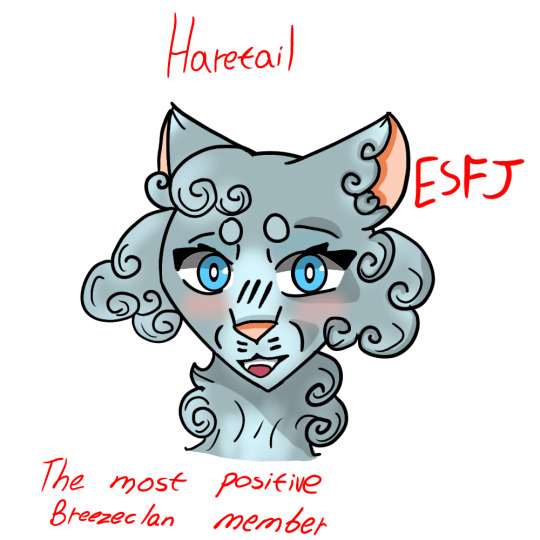
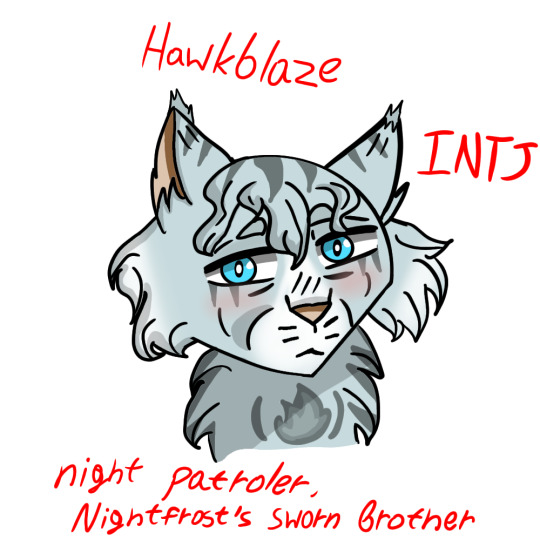





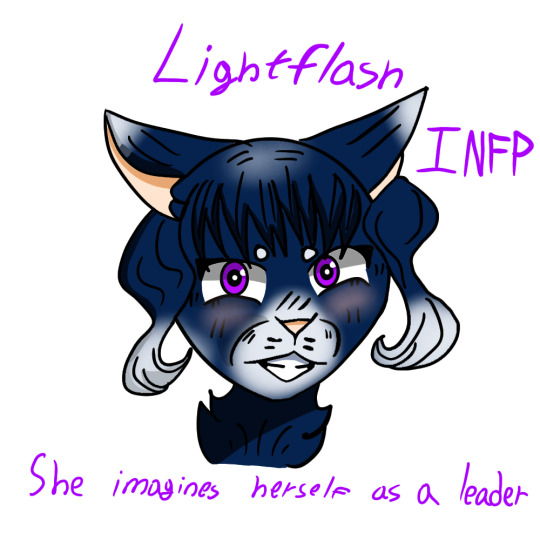
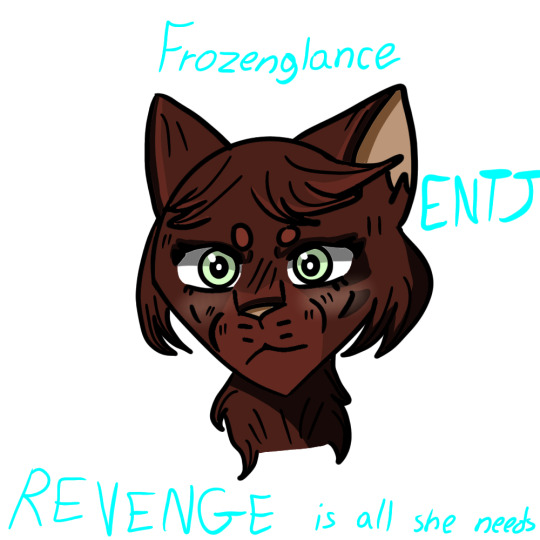
Isekai borsch warriors!AU
Misterius/Breezeclan
Lilystar (Lillianne)
Haretail (Kelly)
Hawkblaze (Phonce)
Violetdusk (Sabrina)
Nightfrost (Vaughan)
Swiftwind (Eric)
Heathershine (Aliccia)
Strayfang (Guadeloupa)
Lightflash (Midge)
Frozenglance (Ada)
1 note
·
View note
Text
look i WILL be insufferable about this if i have to but ada lovelace, katherine goble johnson, margaret hamilton, dorothy vaughan, mary jackson, and marie curie did not do ALL that for women to be collectively denigrated back to ~girl math~
971 notes
·
View notes
Text
The women who laid the foundation of tech
EDIT: I noticed that this post ended up being reblogged by terfs. If you're transphobic this post is not for you to reblog. I want to celebrate everyone who is not a cis man in this industry, including trans women and nonbinary people in tech, and it was my mistake to only include cis women in this post when there are so many trans women and nonbinary people who have done great things in tech as well. Trans women are women and just as important.
Here you can read about trans ppl in tech, and please do:
https://www.thecodingspace.com/blog/2022-03-01-six-trans-programmers-who-shattered-the-lavender-ceiling/
https://abcnews.go.com/Business/transgender-tech-visibility-obstacles-remain/story?id=76374628
The morning of women's day i attended a super inspiring seminar about being a woman in tech at a large tech company in my city, and now I'm inspired to share what I learned with all of you!
I didn't have time to finish this post on women's day, but it's not too late to post now: every day is a day to celebrate women!
Women actually laid the foundation for a lot of the tech industry.
For example, the first computer, ENIAC, was programmed completely by women! While men were the behind the scenes engineers, it was women who did all the actual programming of ENIAC.

The women who made up the team responsible for programming it were called Jean Bartik, Kay McNulty, Betty Holberton, Marlyn Wescoff, Frances V. Spence and Ruth Teitelbaum.
I think one woman who is finally getting her overdue recognition is Ada Lovelace. She was a mathematician (also often referred to as the first programmer) who created the first algorithm in 1842, which wasn't recognized until 1953! However, since none of her machines were ever completed it was never tested in practice during her time.
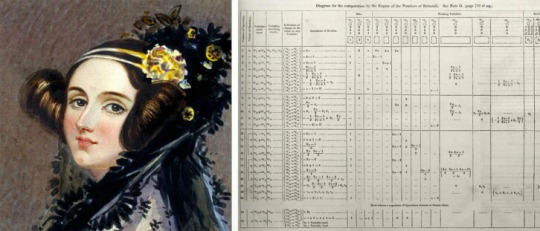
She has since been celebrated by giants such as google, and she has given name to a programming language (Ada). She was also the first person to write about what is today known as AI. Back when she was practicing, computers were simply thought of as calculators. But she had an idea that if computers can understand numbers, then that can be translated to letters, and in turn that can lead to computers being able to handle words, and eventually even write, draw and create music.
Hedy Lamarr was a famous Hollywood actress in the 40's, but she was also an inventor who laid ground for what we use today for Wi-Fi, Bluetooth and GPS services.
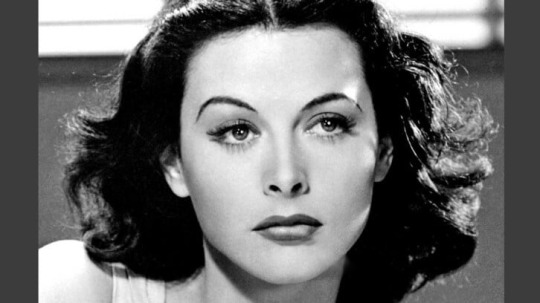
During WW2 she wanted to contribute positviely to the military efforts against the Nazis, and she tried to figure out how to radio control torpedoes. In 1942 she patented her technology "Secret Communications System", also known as frequency hopping, which laid the foundation for the technology we use today for Wi-Fi, GPS and Bluetooth. It wasn't until 1962 that it was first used for its intended purpose, during the cuban missile crisis.
Grace Hopper invented the first compiler, called A-0, in 1955, and was also part of the Univac team, which was the company also responsible for building ENIAC. She also initiated work on the COBOL programming language.

She was also the one to coin the term "bug" in 1947. Computers back then had lights to visualize their working process (which was also a womans idea to implement btw) and bugs would be attracted to the lights, but usually that was no issue - until a bug made its way into a tube which caused the computer to stop working. Hopper taped the bug to a piece of paper and logged what caused the crash - a bug.
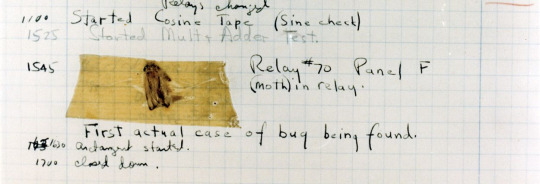
Dorothy Vaughan (left), alongside colleagues such as Katherine Johnson (middle) and Mary Jackson (right), was a mathematician at NASA (called NACA when she started) who worked on the orbit for the first ever manned spaceflight and later also on Apollo 11 that would take humanity to the moon!
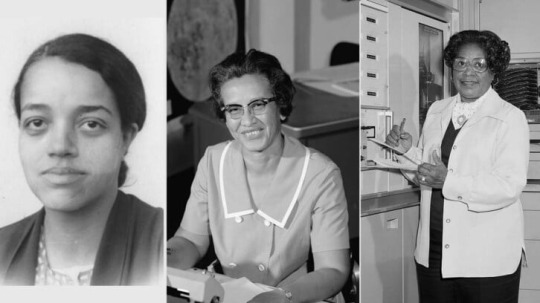
When Vaughan started at what was then called NACA, segregation was still prevalent in the US and she was not allowed in the same areas in the office as her white colleagues. Another department was formed for the black staff, and when the director of said department unexpectedly died, she was appointed as the new director and thus became the first ever black woman at that position at NACA/NASA. In 1958 when NACA becomes NASA segregation is forbidden, and that is when Vaughan and her colleagues Johnson and Jackson started working on programming the orbit and later also Apollo 11.
Continuing on the same track of NASA and space, Margaret Hamilton was the Apollo project's first actual programmer. Hamilton became the director of software engineering at NASA in 1965, and she was also the person to first coin the term !
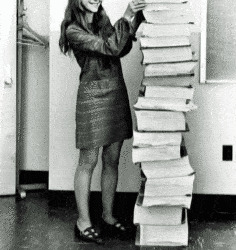
In the image above, she stands next to all the handwritten code that was used to send humanity to the moon. During the early stages of the project when she would speak of "sofware engineering", software development was not taken as seriously as other forms of engineering, and it wasn't regarded as a science, either. She wanted to legitimize software development as an engineering discipline, and overtime the term "software engineering" gained the same respect as any other technical discipline.
And lastly, if you're a woman in STEM, I want to highlight and celebrate you! Being a woman in a male dominated industry is not easy, we often suffer from sterotype threat and are not seen as our own individuals, but rather "the woman" in a room full of men. But just as these women, I'm sure you will achieve greatness!!
Here are some additional resources if you'd like to learn more:
https://www.history.com/news/coding-used-to-be-a-womans-job-so-it-was-paid-less-and-undervalued
https://digitalfuturesociety.com/programming-when-did-womens-work-become-a-mans-world/
And this was mainly my source for this post, but it's unfortunately only available in Swedish:
Thank you for reading ✨
#womens day#women in stem#woman in stem#woman in tech#girl coder#girl programmer#programming#programmer#software#software development#software developer#software engineering#javascript#python#css#html#react.js#django#php#mysql#sql#database#frontend developer#frontend development#webdev#web development#backend development#history#women in tech#women in history
960 notes
·
View notes
Text
YES POSITIVITY THANK YOU OP FOR BRINGING THIS UP.
Okay, number 5 will be the sad but sweet trumpet player Nick Vaughan from Before We Go, who deserves so much better:

Number 4 is the trying-his-best, loving uncle who needs a break and lots of hugs and forehead kisses (preferably from me), Frank Adler, Gifted. (Hurts to put him in 4 but someone has to go there :[ )

Number 3 is the dorky but sassy farmer Cole Turner from the very recent Ghosted:

Number 2 is the hotshot ADA dad in Defending Jacob with a broken family, traumatic past and a questionable dark side but I love you anyway, Andrew Stephen Barber:

And number 1....
Number 1 is the wonderful, amazing, only-one-of-his-kind, divine, kind, compassionate, brave, selfless, absolutely dreamy golden-haired, blue-eyed...
love of my life, king of my heart, the soulmate I never knew I needed...
my one true love, my only one, the one man who always lives in my heart and mind rent free, my saviour, my protector, the man I always find myself running to...
Steven Grant Rogers from the Marvel universe.






Yes 6 images of him bc he's no. 1 deal with it.
I’m so tired of the constant negativity coming from people that are so over this fandom. So let’s bring some positivity!! It’s something I’ve always been so curious about, because I’m sure all of our tastes differ!! BUT! I want to know what everyone’s Top 5 Chris Characters are!
Here’s mine:

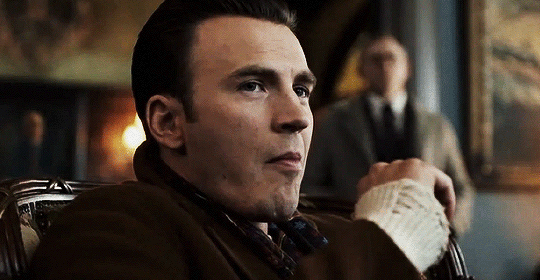



@tis-thedamn-season @maroonsunrise83 @resurrectedlily @oh-my-damn @captregina @ramp-it-up @fineanddandy @sunshinexsin
#frank adler#nick vaughan#cole turner#andy barber#steve rogers#chris evans#ghosted#before we go#defending jacob#gifted#marvel#captain america
202 notes
·
View notes
Text
I am very pleased to announce that score/parts of my piece "Contemplations of Summer" is now available to buy at Prima la musica!
This piece is scored for baroque-ensemble and was my submission to the 2022 Růžičková Composition Competition which has been organized by british violinist Ada Witczyk since 2020.
Congratulations to my fellow colleagues Susie Vaughan & Isidro Albarreal Delgado who also recieved the honour of having music published via this competition!
You can check check out our works via this link:
http://www.primalamusica.com/contents/en-uk/d973_R%C5%AF%C5%BEi%C4%8Dkova_2022.html

1 note
·
View note
Text
Discovering the Best Dentist in Vaughan: Tips, Recommendations and Reviews
Looking for a dentist in Vaughan can feel like an overwhelming task, especially with so many options to choose from. But don’t let the search intimidate you! Whether you’re new to the area or just ready for a change, finding the best dentist in Vaughan is easier than you think. With tips, recommendations and reviews at your fingertips, we’re here to guide you through the process of discovering your perfect dental match. So sit back and relax as we take you on a journey towards healthy teeth and a beautiful smile! Visit: https://www.regattadentalcentre.ca/ What is dentistry, and what does it involve? Dentistry is the practice of restoring and preserving teeth. Dentists use a variety of techniques to treat dental problems, including filling cavities, remineralizing tooth enamel, and correcting malocclusions (problems with the alignment of teeth). To become a dentist, you must first earn a Doctor of Dental Medicine (DMD) degree from an accredited school. After completing your dental education, you will need to pass the American Dental Association’s (ADA) Dentist Board Certification Examination. Finally, you will need to register with the state in which you plan to practice dentistry. The average dentist spends about two hours per day treating patients. A typical appointment may include a check-up exam and oral surgery such as fillings or extractions. You may also receive preventive care such as sealants and fluoride treatments. What are the different types of dentists? There are several different types of dentists, each with their own qualifications and specialties. If you’re looking for a dentist in Vaughan, here are some factors to consider: General Dentist: A general dentist is usually the first person you would go to if you have dental problems that don’t fall into one of the other categories. They may be able to treat common problems such as a toothache or a baby’s tooth decay. Dentist specializing in Implant Dentistry: An implant dentist specializes in placing dental implants, which are artificial teeth that can replace lost teeth. These implants can be fixed permanently or removable, depending on your needs. Dentist specializing in Cosmetic Dentistry: A cosmetic dentist is skilled at restoring smile makeovers using procedures such as veneers, crowns and bridges. They may also perform oral surgery such as removing wisdom teeth or replacing broken teeth. Dentist specializing in Pediatric Dentistry: Pediatric dentists are specially trained to care for children from newborns through teenagers who need routine dental care and treatment for conditions like cavities and braces. How much does dental care cost? When you are looking for the best dentist in Vaughan, it is important to do your research. The costs of dental care vary greatly depending on where you live and the service you require. However, here are some general costs to keep in mind: Dental surgery: Dental surgery can range from $200 for a basic cleaning up to $5,000 or more for a full implant or restoration. Dental crowns and bridges: Crowns and bridges can cost between $1,000 and $10,000. Dentist visits: A typical visit to the dentist will cost around $100. This price includes x-rays and other necessary tests.
0 notes
Text

cant wait to go back to my man so he can call me an idiot and throw me off a cliff anyways this scene lives in my mind rent free
#oliver PLEASE i miss you and i just finished replaying#oliver shen#scout: an apocalypse story#mc: ada vaughan
26 notes
·
View notes
Text
read in 2023!
i did a reading thread last year and really enjoyed it so i am doing another one this year!! as always, you can find me on goodreads and my askbox is always open!
The Adventures of Tom Bombadil and Other Verses from the Red Book by J.R.R. Tolkien (★★★★☆)
Ninth House by Leigh Bardugo* (★★★★★)
Beowulf by Unknown, translated by Seamus Heaney (★★★★☆)
The Rise of Kyoshi by F.C. Lee (★★★★☆)
Hell Bent by Leigh Bardugo (★★★★★)
Her Body and Other Parties: Stories by Carmen Maria Machado (★★★★☆)
The Importance of Being Earnest by Oscar Wilde (★★★★★)
The Shadow of Kyoshi by F.C. Lee (★★★★☆)
The Black Flamingo by Dean Atta (★★★★★)
Nine Liars by Maureen Johnson (★★☆☆☆)
Sharks in the Rivers by Ada Limón (★★★☆☆)
Babel, Or the Necessity of Violence: An Arcane History of the Oxford Translators’ Revolution by R.F. Kuang (★★★★★)
Firekeeper’s Daughter by Angeline Boulley (★★★★★)
Paper Girls, Volume 1 by Brian K. Vaughan, Cliff Chiang, and Matt Wilson (★★★☆☆)
Paper Girls, Volume 2 by Brian K. Vaughan, Cliff Chiang, and Matt Wilson (★★★☆☆)
There Are Trans People Here by H. Melt (★★★★★)
Everyone in My Family Has Killed Someone by Benjamin Stevenson (★★★★☆)
Paper Girls, Volume 3 by Brian K. Vaughan, Cliff Chiang, and Matt Wilson (★★★☆☆)
Paper Girls, Volume 4 by Brian K. Vaughan, Cliff Chiang, and Matt Wilson (★★★☆☆)
Howl’s Moving Castle by Diana Wynne Jones (★★★★☆)
Paper Girls, Volume 5 by Brian K. Vaughan, Cliff Chiang, and Matt Wilson (★★★☆☆)
The Guest List by Lucy Foley (★★☆☆☆)
Paper Girls, Volume 6 by Brian K. Vaughan, Cliff Chiang, and Matt Wilson (★★★☆☆)
The Princess Bride by William Goldman (★★★★☆)
Care Work: Dreaming Disability Justice by Leah Lakshmi Piepzna-Samarasinha (★★★★★)
Daisy Jones and the Six by Taylor Jenkins Reid* (★★★★★)
Goldie Vance, Volume 1 by Hope Larson, Brittney Williams
Hell Followed With Us by Andrew Joseph White (★★★★☆)
The Inheritance Games by Jennifer Lynn Barnes (★★★★☆)
The Hawthorne Legacy by Jennifer Lynn Barnes (★★★☆☆)
Are Prisons Obsolete? by Angela Y. Davis (★★★★★)
The Final Gambit by Jennifer Lynn Barnes (★★★☆☆)
Who Goes There? by John W. Campbell Jr. (★★☆☆☆)
The Left Hand of Darkness by Ursula K. Le Guin (★★★★★)
Going Dark by Melissa de la Cruz (★★★☆☆)
Working 9 to 5: A Women's Movement, a Labor Union, and the Iconic Movie by Ellen Cassedy (★★★★☆)
Why Didn't They Ask Evans? by Agatha Christie (★★★★☆)
The Murder on the Links by Agatha Christie (★★★★☆)
The Waste Land and Other Poems by T.S. Eliot
The Mostly True Story of Tanner and Louise by Colleen Oakley (★★★★☆)
Hollow by Shannon Watters, Branden Boyer-White, and Berenice Nelle (★★★★☆)
Heavy Vinyl, Volume 1: Riot on the Radio by Nina Vakueva and Carly Usdin (★★★★☆)
Burn Down, Rise Up by Vincent Tirado (★★★☆☆)
Heavy Vinyl, Volume 2: Y2K-O! by Nina Vakueva and Carly Usdin (★★★★☆)
Simon vs. the Homo Sapiens Agenda by Becky Albertalli (★★★★☆)
Five Little Pigs by Agatha Christie (★★★★☆)
Malibu Rising by Taylor Jenkins Reid (★★★★★)
Last Night at the Telegraph Club by Malinda Lo (★★★★★)
The Backstagers, Vol 1: Rebels Without Applause by James Tynion IV, Rian Sygh, and Walter Baiamonte (★★★☆☆)
The Odyssey by Homer, translated by Emily Wilson (★★★★☆)
The Backstagers, Vol 2: The Show Must Go On by James Tynion IV, Rian Sygh, and Walter Baiamonte (★★★☆☆)
A Midsummer Night's Dream by William Shakespeare (★★★★☆)
Happy Place by Emily Henry (★★★★★)
After Dark with Roxie Clark by Brooke Lauren Davis (★★★☆☆)
Night of the Mannequins by Stephen Graham Jones (★★★☆☆)
Lord of the Flies by William Golding (★★★★☆)
A Little Bit Country by Brian D. Kennedy (★★★★☆)
Built From the Fire: The Epic Story of Tulsa’s Greenwood District, America’s Black Wall Street by Victor Luckerson (★★★★★)
Cheer Up!: Love and Pompoms by Crystal Frasier, Oscar O. Jupiter, and Val Wise (★★★★★)
All Out: The No-Longer-Secret Stories of Queer Teens throughout the Ages by assorted authors, edited by Saundra Mitchell (★★★★☆)
Gwen and Art Are Not in Love by Lex Croucher** (★★★★☆)
St. Juniper's Folly by Alex Crespo** (★★★★★)
The Last Girls Standing by Jennifer Dugan** (★★☆☆☆)
Killers of the Flower Moon: The Osage Murders and the Birth of the FBI by David Grann (★★★★★)
Where Echoes Die by Courtney Gould** (★★★★☆)
Your Lonely Nights Are Over by Adam Sass** (★★★★★)
Princess Princess Ever After by Kay O’Neill (★★★☆☆)
Thieves' Gambit by Kayvion Lewis** (★★★☆☆)
The Secret Adversary by Agatha Christie (★★★★☆)
You’re Not Supposed to Die Tonight by Kalynn Bayron (★★★☆☆)
Our Wives Under the Sea by Julia Armfield (★★★★☆)
Devotions by Mary Oliver (★★★★★)
The Lightning Thief by Rick Riordan* (★★★★☆)
The Sea of Monsters by Rick Riordan* (★★★★☆)
The Titan’s Curse by Rick Riordan* (★★★★★)
The Battle of the Labyrinth by Rick Riordan (★★★★★)
The Last Olympian by Rick Riordan (★★★★★)
Suddenly a Murder by Lauren Muñoz** (★★★★☆)
The Demigod Files by Rick Riordan (★★★★☆)
Big Little Lies by Liane Moriarty (★★★★★)
All That’s Left to Say by Emery Lord (★★★★★)
The Lost Hero by Rick Riordan (★★★★☆)
Who's Afraid of Virginia Woolf? by Edward Albee (★★★☆☆)
The Son of Neptune by Rick Riordan (★★★★☆)
The Spirit Bares Its Teeth by Joseph Andrew White (★★★★★)
Hallowe’en Party by Agatha Christie (★★★★☆)
M Is for Monster by Talia Dutton (★★★★☆)
The Mark of Athena by Rick Riordan (★★★★★)
Our Shadows Have Claws: 15 Latin American Monster Stories by assorted authors, edited by Yamile Saied Méndez and Amparo Ortiz (★★★★☆)
These Fleeting Shadows by Kate Alice Marshall (★★★★☆)
Northanger Abbey by Jane Austen (★★★★★)
The Hunger Games by Suzanne Collins* (★★★★★)
The Dead Romantics by Ashley Poston (★★★★☆)
Catching Fire by Suzanne Collins* (★★★★★)
The October Country by Ray Bradbury (★★★★☆)
Hamlet by William Shakespeare (★★★★☆)
The Legend of Sleepy Hollow by Washington Irving (★★★★☆)
Mockingjay by Suzanne Collins* (★★★★★)
The Appeal by Janice Hallett (★★★★☆)
The Westing Game by Ellen Raskin (★★★★☆)
The Carrying: Poems by Ada Limón (★★★★★)
The Hundred Years’ War on Palestine: A History of Settler-Colonial Conquest and Resistance, 1917-2017 by Rashid Khalidi (★★★★★)
Born to Run by Bruce Springsteen (★★★★★)
The Ballad of Songbirds and Snakes by Suzanne Collins* (★★★★★)
Know My Name by Chanel Miller (★★★★★)
Rifqa by Mohammed El-Kurd (★★★★★)
Bloodchild and Other Stories by Octavia E. Butler (★★★★☆)
The Witch Haven by Sasha Peyton Smith* (★★★★★)
The Moving Finger by Agatha Christie (★★★★☆)
The Essential Calvin and Hobbes by Bill Watterson (★★★★★)
A Murder is Announced by Agatha Christie (★★★★☆)
The World Keeps Ending, and the World Goes On by Franny Choi (★★★★★)
The Witch Hunt by Sasha Peyton Smith (★★★★☆)
That’s Not My Name by Megan Lally** (★★★★☆)
The Princess Diarist by Carrie Fisher (★★★★☆)
The House of Hades by Rick Riordan (★★★★☆)
Dark Tales by Shirley Jackson (★★★★☆)
Pageboy by Elliot Page (★★★★★)
All This and Snoopy, Too by Charles M. Schultz (★★★★☆)
The Blood of Olympus by Rick Riordan (★★★★☆)
Murder in the Family by Cara Hunter (★★★★☆)
The Mystery Writer by Sulari Gentill** (★★☆☆☆)
Comfort Me With Apples by Catherynne M. Valente (★★★★☆)
The Deep Sky by Yume Kitasei (★★★★☆)
Spell on Wheels Vol. 1 by Kate Leth, Megan Levens, and Marissa Louise (★★★★☆)
Spell on Wheels Vol. 2: Just to Get to You by Kate Leth, Megan Levens, and Marissa Louise (★★★★☆)
Freedom is a Constant Struggle by Angela Y. Davis (★★★★☆)
Kindred by Octavia E. Butler (★★★★☆)
The Christmas Appeal by Janice Hallett (★★★★☆)
So Far So Good: Final Poems: 2014 - 2018 by Ursula K. Le Guin (★★★★☆)
Murder on the Christmas Express by Alexandra Benedict (★☆☆☆☆)
Midwinter Murder: Fireside Tales from the Queen of Mystery by Agatha Christie (★★★★☆)
Mother-Daughter Murder Night by Nina Simon (★★★★☆)
Hercule Poirot’s Christmas by Agatha Christie (★★★★☆)
Wuthering Heights by Emily Brontë (★★★★★)
The Twelve Days of Murder by Andreina Cordani (★★★★☆)
The Christmas Guest by Peter Swanson (★★★★☆)
The Sittaford Mystery by Agatha Christie (★★★★☆)
The Twenty-Ninth Year by Hala Alyan (★★★☆☆)
Christmas Presents by Lisa Unger (★★★☆☆)
Letters From Father Christmas by J.R.R. Tolkien
Bellweather Rhapsody by Kate Racculia (★★★★☆)
An asterisk (*) indicates a reread. A double asterisk (**) indicates an ARC.
108 notes
·
View notes
Note
7
17
39
johnny why
7. Animorphs, volume 1 was the oldest! It was published in 1996.
17. In no order, really: 1. "A Prayer for the Crown-Shy" Becky Chambers, 2. "Too Like the Lightening", Ada Palmer (I haven't finished it but, yeah, man), 3. "The Hollow Places", T. Kingfisher, 4. "What Moves the Dead'', T. Kingfisher, and 5. every issue of Saga that I read, because they're all muddled there, and I'm conflicted with the series now, but over all it's pretty great,....by Brian Vaughan
39. 1. All of Terra Ignota (this counts, shush), 2. All of the Murderbot Diaries (this also counts, shush), 3. "Oathbringer", Sanderson (I started it eons ago, but dang is it a Chunk), 4. something by Adrian Tchaikovsky, and 5. "The Thorn of Emberlain", by Scott Lynch (fingers crossed that he releases it).
5 notes
·
View notes
Photo

Spindle Cube Chair, Frank Lloyd Wright, 1902, Art Institute of Chicago: Arts of the Americas
Purchased with funds provided by the Antiquarian Society; Roger McCormick Purchase, Alyce and Edwin DeCosta and the Walter E. Heller Foundation, Robert Allerton Purchase Income, Ada Turnbull Hertle, and Mary Waller Langhorne Memorial funds; Robert Allerton Trust; Pauline Seipp Armstrong Fund; Bequest of Ruth Falkenau Fund in memory of her parents; Wendel Fentress Ott Endowment, Bessie Bennett, Elizabeth R. Vaughan, and Gladys N. Anderson funds; Estate of Stacia Fischer; The Goodman Fund; Maurice D. Galleher Endowment; Samuel P. Avery and Charles U. Harris Endowed Acquisition funds; Estate of Cora Abrahamson; Charles R. and Janice Feldstein Endowment Fund for Decorative Arts Size: 73.7 × 73.7 × 73.7 cm (29 × 29 × 29 in.) Medium: Poplar and leather
https://www.artic.edu/artworks/190558/
7 notes
·
View notes
Text
Modern head canon part 3
Shelby-Family and music
Arthur

He listens to classic rock like cream and Derek and the dominos. The clash, the Beatles, Queen, the doors… stuff like that, but different to his brother John, he doesn’t keep a lot of records around and doesn’t go to concerts anymore. Also he is not interested in finding new music, but he listens to the radio in the car, because it’s just easier this way. And while he is working on a car, there better be music blasting all over the garage.
Song to represent him: Born under a bad sign- Cream
John
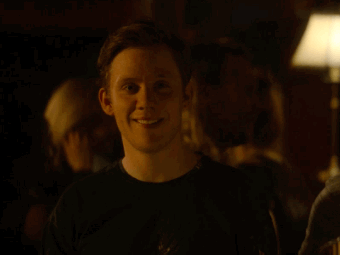
Cus we’re at it! Like mention before, he owns a huge collection of CDs and Vinyls. John loves concerts and goes to at least one per month. It is probably more. In his free time he wears band shirts. Suits are cool, but not very comfortable. And he would let his girlfriend wear his shirts, because they look super-hot on her. Especially, if the shirt is the only thing she is wearing.
In his apartment there is an expensive sound system, which he can also console from his phone, but no one but him is allowed to touch it. And you can look at the records, but you have to put them back in place, because he likes to have a special order with his collection. Nobody understands that order. Also worth mentioning, John knows bands nobody else knows and he could talk hours about that topic only. His family is already annoyed by him and won’t even ask a music question while he is in the room.
(I have a playlist of songs; I think that suits him just right, but enough said about my little guilty pleasure. So sorry about the list, I couldn’t decide on one song only. If someone is acutally interested or just liked the songs I picked… there are more where that is coming from)
Song:
Little Monster- Royal Blood
Night People- You Me At Six
Just to Get Your High- Arcades and Lions
Do You Want to- Franz Ferdinand
Gang Control- Leftöver Crack
Too Drunk to Fuck- Dead Kennedys
Finn
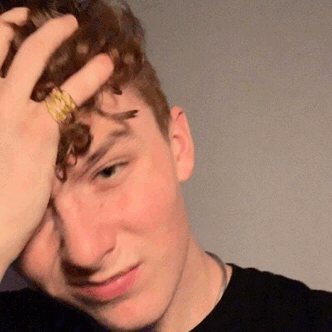
Sweet, little Finn likes to emulate his brothers. So he is trying to listen to all the old stuff his brothers like. Huge Queen Fan, but he also likes so much more music. Finn has a little thing for minimal and well, he doesn’t fixate on just one genre- but he hides that from John, because John is so picky about music. The smolest Shelby brother also likes going to clubs and dancing there, with the b-boyz and the b-girls. Isaiah is always with him and they keep each other’s back.
Finn is chill and he clearly gives of the “indie-vibe”. I’m thinking of Hozier and Milky Chance.
Song: The Game- Milky Chance |Wasteland, Baby- Hozier
Tommy
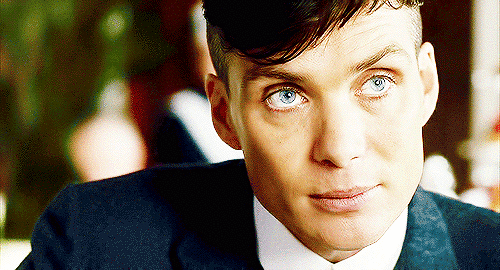
(I thought about that so fricking long. What kind of music would Tommy hear? A friend said something like, he don’t like music at all, but I think that’s not possible as music is available nowadays and all around us and it’s human to like melodies and the rhythm)
Tommy is the guy who would prefer silence, especially when he needs to think, but of course, when there is nothing on his mind and he has some free time with his family or friends, music is okay.
He likes romani music as this reminds him of his mother, which was a beautiful singer and would sing whenever she felt the need to. This music also reminds him of his childhood. Tommy is very reflected on that part. He knows when his parents failed and weren’t the best parents. He is still bitter about his father and wished that his mother hadn’t died, but he also remembers how much fun he had with is siblings or his parents, when they had a good day. Sometimes he likes to think about that time of life. And the music brings back the memories. Then he even likes to dance- with the right woman of course.
Besides that he likes instrumental music, like tango music or classical pieces, because there are no distracting vocals.
Song: Barcelona Gipsy Klezmer Orchestra - Djelem Djelem
And I’ll add a song with I associate with him: Bad things – Jace Everett | Bad news- Melody Gardot
Polly
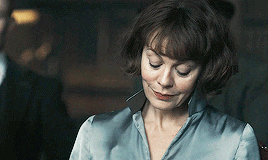
Jazz, definitely Jazz here. To specify… Swing, Gypsy Jazz like Django Reinhard-Style, Bebob and some Gospel, which is not Jazz, but just leave it here.
She can also dance to that and if she’s getting an invitation to a concert she is most likely to say yes. Polly likes to show of her skills and the most guys are pretty impressed by that and her stunning confidence. When she enters the dance floor, the heads turn around.
Aberama likes to dance with her until they fight for air. Then they drop dead on a chair and drink some more.
And she taught Michael to dance, so he doesn’t have to sit around at parties. Actually she taught them all, but it didn’t work with Arthur and John.
Song: Whatever Lola wants- Sarah Vaughan | No Man’s prize – Melody Gardot
Michael

He can dance so well. Some might think he is even better than his mum. While he was in custody with the other family he had dancing classes and he’d loved it. Mainly because there he could meet pretty girls and he was one of the only boys. Until this day he still likes to dance with a girl, but he can also do it solo.
But his taste in music goes far beyond the music his mother likes. He has a thing for hard tech, hard bass, gabba, French core and general techno, but not house. And yes, he learned jump style or hakken, because he liked the challenge. Finn films him sometimes while doing that. He is proud and would totally argue with John about music. Michael also likes some rap and the artist The Weeknd. His music always makes me think of Michael
Song: It’s called XCT –Dr. Peacock |Often- The Weeknd
Ada
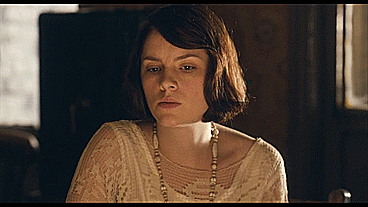
She isn’t so fussy about music. If she likes something, she likes it. As easy as that. She doesn’t like to stick to a genre and listens to everything that is shown to her. Her playlist look like pure chaos because there is pop mixed with rock mixed with jazz mixed with metal mixed something else.
And she likes to play music all the time, because she is not comfortable with dead silence. So her music plays while she is working, while she is baking, while she goes for a walk or grocery shopping. She dances a little, but isn’t so confident as Michael or Polly. Ada is somehow pretty up to date when it comes to music. She always knows the latest song of her favorite artists.
Song: Prisoner- Miley Cyrus ft. Dua Lipa |Back to Black - Amy Winehouse
__________________
Am I missing someone? Should I add a character?
#peaky blinders#peaky blinder headcanon#thomas shelby#tommy shelby#arthur shelby#finn shelby#john shelby#ada thorne#ada shelby#aunt polly
47 notes
·
View notes
Photo

Spindle Cube Chair, Frank Lloyd Wright, 1902, Art Institute of Chicago: American Art
This elegant spindle cube chair is an early example from Frank Lloyd Wright’s home and studio. In 1889 Wright built a house for his young family on Forest Avenue in Oak Park, a new suburb just west of Chicago; ten years later, he opened an attached studio and designed it and the home’s interior in accordance with his philosophy of simplicity and integrity of materials. Among his furniture experiments were heavy, solid cube chairs. By the first decade of the twentieth century, Wright had refined his early design into that of this chair, adding spindles, a subtly tapering crest rail, and gently curving leg ends to produce an effect that is equal parts sophistication and simplicity. The spindles themselves were a legacy of William Morris–inspired ladder-back dining chairs, as well as the Arts and Crafts approach of contrasting positive and negative space. This chair was also influenced by the reticulated ceilings and walls of Japanese homes. Restricted gift of the Antiquarian Society; Roger McCormick Purchase, Alyce and Edwin DeCosta and the Walter E. Heller Foundation, Robert Allerton Purchase Income, Ada Turnbull Hertle, and Mary Waller Langhorne Memorial funds; Robert Allerton Trust; Pauline Seipp Armstrong Fund; Bequest of Ruth Falkenau Fund in memory of her parents; Wendel Fentress Ott Endowment, Bessie Bennett, Elizabeth R. Vaughan, and Gladys N. Anderson funds; Estate of Stacia Fischer; The Goodman Fund; Maurice D. Galleher Endowment; Samuel P. Avery and Charles U. Harris Endowed Acquisition funds; Estate of Cora Abrahamson; Charles R. and Janice Feldstein Endowment Fund for Decorative Arts Size: 73.7 × 73.7 × 73.7 cm (29 × 29 × 29 in.) Medium: Poplar and leather
https://www.artic.edu/artworks/190558/
5 notes
·
View notes
Text
Sarah Vaughan

Sarah Lois Vaughan (March 27, 1924 – April 3, 1990) was an American jazz singer.
Nicknamed "Sassy" and "The Divine One", she won four Grammy Awards, including the Lifetime Achievement Award. She was given an NEA Jazz Masters Award in 1989. Critic Scott Yanow wrote that she had "one of the most wondrous voices of the 20th century".
Early life
Vaughan's father, Asbury "Jake" Vaughan, was a carpenter by trade and played guitar and piano. Her mother, Ada Vaughan, was a laundress who sang in the church choir. The Vaughans lived in a house on Brunswick Street in Newark for Vaughan's entire childhood. Jake was deeply religious. The family was active in New Mount Zion Baptist Church at 186 Thomas Street. Vaughan began piano lessons at the age of seven, sang in the church choir, and played piano for rehearsals and services.
She developed an early love for popular music on records and the radio. In the 1930s, she frequently saw local and touring bands at the Montgomery Street Skating Rink. By her mid-teens, she began venturing illegally into Newark's night clubs and performing as a pianist and singer at the Piccadilly Club and the Newark Airport.
Vaughan attended East Side High School, then transferred to Newark Arts High School, which opened in 1931. As her nocturnal adventures as a performer overwhelmed her academic pursuits, she dropped out of high school during her junior year to concentrate on music.
Career
1942–43: Early career
Vaughan was frequently accompanied by a friend, Doris Robinson, on her trips into New York City. In the fall of 1942, by which time she was 18 years old, Vaughan suggested that Robinson enter the Apollo Theater Amateur Night contest. Vaughan played piano accompaniment for Robinson, who won second prize. Vaughan later decided to go back and compete as a singer herself. She sang "Body and Soul", and won—although the date of this victorious performance is uncertain. The prize, as Vaughan recalled to Marian McPartland, was $10 and the promise of a week's engagement at the Apollo. On November 20, 1942, she returned to the Apollo to open for Ella Fitzgerald.
During her week of performances at the Apollo, Vaughan was introduced to bandleader and pianist Earl Hines, although the details of that introduction are disputed. Billy Eckstine, Hines' singer at the time, has been credited by Vaughan and others with hearing her at the Apollo and recommending her to Hines. Hines claimed later to have discovered her himself and offered her a job on the spot. After a brief tryout at the Apollo, Hines replaced his female singer with Vaughan on April 4, 1943.
1943–44: Earl Hines and Billy Eckstine
Vaughan spent the remainder of 1943 and part of 1944 touring the country with the Earl Hines big band, which featured Billy Eckstine. She was hired as a pianist so Hines could hire her under the jurisdiction of the musicians' union (American Federation of Musicians) rather than the singers union (American Guild of Variety Artists). But after Cliff Smalls joined the band as a trombonist and pianist, her duties were limited to singing. The Earl Hines band in this period is remembered as an incubator of bebop, as it included trumpeter Dizzy Gillespie, saxophonist Charlie Parker (playing tenor saxophone rather than alto), and trombonist Bennie Green. Gillespie arranged for the band, although the contemporary recording ban by the musicians' union meant that no commercial recordings exist.
Eckstine quit the Hines band in late 1943 and formed a big band with Gillespie, leaving Hines to become the band's musical director. Parker joined Eckstine, and over the next few years the band included Gene Ammons, Art Blakey, Miles Davis, Kenny Dorham, Dexter Gordon, and Lucky Thompson. Vaughan accepted Eckstine's invitation to join his band in 1944, giving her the opportunity to record for the first time on December 5, 1944, on the song. "I'll Wait and Pray" for De Luxe. Critic and producer Leonard Feather asked her to record later that month for Continental with a septet that included Dizzy Gillespie and Georgie Auld. She left the Eckstine band in late 1944 to pursue a solo career, although she remained close to Eckstine and recorded with him frequently.
Pianist John Malachi is credited with giving Vaughan the moniker "Sassy", a nickname that matched her personality. She liked it, and the name and its shortened variant "Sass" stuck with colleagues and the press. In written communications, Vaughan often spelled it "Sassie".
1945–48: Early solo career
Vaughan began her solo career in 1945 by freelancing on 52nd Street in New York City at the Three Deuces, the Famous Door, the Downbeat, and the Onyx Club. She spent time at Braddock Grill next to the Apollo Theater in Harlem. On May 11, 1945, she recorded "Lover Man" for Guild with a quintet featuring Gillespie and Parker with Al Haig on piano, Curly Russell on double bass, and Sid Catlett on drums. Later that month, she went into the studio with a slightly different and larger Gillespie/Parker aggregation and recorded three more sides.
After being invited by violinist Stuff Smith to record the song "Time and Again" in October 1945, Vaughan was offered a contract to record for Musicraft by owner Albert Marx, although she would not begin recording as a leader for Musicraft until May 7, 1946. In the intervening time, she recorded for Crown and Gotham and began performing regularly at Café Society Downtown, an integrated club in New York's Sheridan Square.
While at Café Society, Vaughan became friends with trumpeter George Treadwell, who became her manager. She delegated to him most of the musical director responsibilities for her recording sessions, allowing her to concentrate on singing. Over the next few years, Treadwell made changes in Vaughan's stage appearance. Aside from a new wardrobe and hair style, she had her teeth capped, eliminating a gap between her two front teeth.
Her recordings for Musicraft included "If You Could See Me Now" (written and arranged by Tadd Dameron), "Don't Blame Me", "I've Got a Crush on You", "Everything I Have Is Yours" and "Body and Soul". With Vaughan and Treadwell's professional relationship on solid footing, the couple married on September 16, 1946.
In 1947, Vaughan performed at the third Cavalcade of Jazz concert held at Wrigley Field in Los Angeles which was produced by Leon Hefflin, Sr. on September 7, 1947. The Valdez Orchestra, The Blenders, T-Bone Walker, Slim Gaillard, The Honeydrippers, Johnny Otis and his Orchestra, Woody Herman, and the Three Blazers also performed that same day.
Vaughan's recording success for Musicraft continued through 1947 and 1948. Her recording of "Tenderly"—she was proud to be the first to have recorded that jazz standard—became an unexpected pop hit in late 1947. Her December 27, 1947, recording of "It's Magic" (from the Doris Day film Romance on the High Seas) found chart success in early 1948. Her recording of "Nature Boy" from April 8, 1948, became a hit around the time the popular Nat King Cole version was released. Because of a second recording ban by the musicians' union, "Nature Boy" was recorded with an a cappella choir.
1948–53: Stardom and the Columbia years
The musicians' union ban pushed Musicraft to the brink of bankruptcy. Vaughan used the missed royalty payments as an opportunity to sign with the larger Columbia record label. After the settling of legal issues, her chart successes continued with "Black Coffee" in the summer of 1949. While at Columbia through 1953, she was steered almost exclusively to commercial pop ballads, several with success on the charts: "That Lucky Old Sun", "Make Believe (You Are Glad When You're Sorry)", "I'm Crazy to Love You", "Our Very Own", "I Love the Guy", "Thinking of You" (with pianist Bud Powell), "I Cried for You", "These Things I Offer You", "Vanity", "I Ran All the Way Home", "Saint or Sinner", "My Tormented Heart", and "Time".
She won Esquire magazine's New Star Award for 1947, awards from Down Beat magazine from 1947 to 1952, and from Metronome magazine from 1948 to 1953. Recording and critical success led to performing opportunities, with Vaughan singing to large crowds in clubs around the country during the late 1940s and early 1950s. In the summer of 1949, she made her first appearance with a symphony orchestra in a benefit for the Philadelphia Orchestra entitled "100 Men and a Girl." Around this time, Chicago disk jockey Dave Garroway coined a second nickname for her, "The Divine One", that would follow her throughout her career. One of her early television appearances was on DuMont's variety show Stars on Parade (1953–54) in which she sang "My Funny Valentine" and "Linger Awhile".
In 1949, with their finances improving, Vaughan and Treadwell bought a three-story house on 21 Avon Avenue in Newark, occupying the top floor during their increasingly rare off-hours at home and moving Vaughan's parents to the lower two floors. However, business pressures and personality conflicts led to a cooling in Treadwell and Vaughan's relationship. Treadwell hired a road manager to handle her touring needs and opened a management office in Manhattan so he could work with other clients.
Vaughan's relationship with Columbia soured as she became dissatisfied with the commercial material and its lackluster financial success. She made some small-group recordings in 1950 with Miles Davis and Bennie Green, but they were atypical of what she recorded for Columbia.
Radio
In 1949, Vaughan had a radio program, Songs by Sarah Vaughan, on WMGM in New York City. The 15-minute shows were broadcast in the evenings on Wednesday through Sunday from The Clique Club, described as "rendezvous of the bebop crowd." She was accompanied by George Shearing on piano, Oscar Pettiford on double bass, and Kenny Clarke on drums.
1954–59: Mercury years
In 1953, Treadwell negotiated a contract for Vaughan with Mercury in which she would record commercial material for Mercury and jazz-oriented material for its subsidiary, EmArcy. She was paired with producer Bob Shad, and their working relationship yielded commercial and artistic success. Her debut recording session at Mercury took place in February 1954. She remained with Mercury through 1959. After recording for Roulette from 1960 to 1963, she returned to Mercury from 1964 to 1967.
Her commercial success at Mercury began with the 1954 hit "Make Yourself Comfortable", recorded in the fall of 1954, and continued with "How Important Can It Be" (with Count Basie), "Whatever Lola Wants", "The Banana Boat Song", "You Ought to Have a Wife", and "Misty". Her commercial success peaked in 1959 with "Broken Hearted Melody", a song she considered "corny" which nevertheless became her first gold record, and a regular part of her concert repertoire for years to come. Vaughan was reunited with Billy Eckstine for a series of duet recordings in 1957 that yielded the hit "Passing Strangers". Her commercial recordings were handled by a number of arrangers and conductors, primarily Hugo Peretti and Hal Mooney.
The jazz "track" of her recording career proceeded apace, backed either by her working trio or combinations of jazz musicians. One of her favorite albums was a 1954 sextet date that included Clifford Brown.
In the latter half of the 1950s she followed a schedule of almost non-stop touring. She was featured at the first Newport Jazz Festival in the summer of 1954 and starred in subsequent editions of that festival at Newport and in New York City for the remainder of her life. In the fall of 1954, she performed at Carnegie Hall with the Count Basie Orchestra on a bill that also included Billie Holiday, Charlie Parker, Lester Young and the Modern Jazz Quartet. That fall, she again toured Europe before embarking on a "Big Show" U.S. tour, a succession of performances that included Count Basie, George Shearing, Erroll Garner and Jimmy Rushing. At the 1955 New York Jazz Festival on Randalls Island, Vaughan shared the bill with the Dave Brubeck quartet, Horace Silver, Jimmy Smith, and the Johnny Richards Orchestra.
Although the professional relationship between Vaughan and Treadwell was quite successful through the 1950s, their personal relationship finally reached a breaking point and she filed for a divorce in 1958. Vaughan had entirely delegated financial matters to Treadwell, and despite significant income figures reported through the 1950s, at the settlement Treadwell said that only $16,000 remained. The couple evenly divided the amount and their personal assets, terminating their business relationship.
1959–69: Atkins and Roulette
The exit of Treadwell from Vaughan's life was precipitated by the entry of Clyde "C.B." Atkins, a man of uncertain background whom she had met in Chicago and married on September 4, 1959. Although Atkins had no experience in artist management or music, Vaughan wished to have a mixed professional and personal relationship like the one she had with Treadwell. She made Atkins her manager, although she was still feeling the sting of the problems she had with Treadwell and initially kept a closer eye on Atkins. Vaughan and Atkins moved into a house in Englewood, New Jersey.
When Vaughan's contract with Mercury ended in late 1959, she signed on with Roulette, a small label owned by Morris Levy, who was one of the backers of Birdland, where she frequently appeared. She began recording for Roulette in April 1960, making a string of large ensemble albums arranged or conducted by Billy May, Jimmy Jones, Joe Reisman, Quincy Jones, Benny Carter, Lalo Schifrin, and Gerald Wilson. She had pop chart success in 1960 with "Serenata" on Roulette and "Eternally" and "You're My Baby", a couple of residual tracks from her Mercury contract. She recorded After Hours (1961) with guitarist Mundell Lowe and double bassist George Duvivier and Sarah + 2 (1962) with guitarist Barney Kessel and double bassist Joe Comfort.
In 1961 Vaughan and Atkins adopted a daughter, Deborah Lois Atkins, known professionally as Paris Vaughan. However, the relationship with Atkins proved difficult and violent. After several incidents, she filed for divorce in November 1963. She turned to two friends to help sort out the financial affairs of the marriage. Club owner John "Preacher" Wells, a childhood acquaintance, and Clyde "Pumpkin" Golden Jr. discovered that Atkins' gambling and spending had put Vaughan around $150,000 in debt. The Englewood house was seized by the IRS for nonpayment of taxes. Vaughan retained custody of their child and Golden took Atkins' place as Vaughan's manager and lover for the remainder of the decade.
When her contract with Roulette ended in 1963, Vaughan returned to the more familiar confines of Mercury. In the summer of 1963, she went to Denmark with producer Quincy Jones to record Sassy Swings the Tivoli, an album of live performances with her trio. During the next year, she made her first appearance at White House for President Lyndon Johnson. The Tivoli recording would be the brightest moment of her second stint with Mercury. Changing demographics and tastes in the 1960s left jazz musicians with shrinking audiences and inappropriate material. Although she retained a following large and loyal enough to maintain her career, the quality and quantity of her recorded output dwindled as her voice darkened and her skill remained undiminished. At the conclusion of her Mercury deal in 1967, she lacked a recording contract for the remainder of the decade.
1970–82: Fisher and Mainstream
In 1971, at the Tropicana in Las Vegas, Marshall Fisher was a concession stand employee and fan when he was introduced to Sarah Vaughan. They were attracted to each other immediately. Fisher moved in with her in Los Angeles. Although he was white and seven years older, he got along with her friends and family. Although he had no experience in the music business, he became her road manager, then personal manager. But unlike other men and managers, Fisher was devoted to her and meticulously managed her career and treated her well. He wrote love poems to her.
In 1971, Bob Shad, who had worked with her as producer at Mercury, asked her to record for his label, Mainstream, which he had founded after leaving Mercury. Breaking a four-year hiatus, Vaughan signed a contract with Mainstream and returned to the studio for A Time in My Life, a step away from jazz into pop music with songs by Bob Dylan, John Lennon, and Marvin Gaye arranged by Ernie Wilkins. She didn't complain about this eclectic change in direction, but she chose the material for her next album after admiring the work of Michel Legrand. He conducted an orchestra of over one hundred musicians for Sarah Vaughan with Michel Legrand, an album of compositions by Legrand with lyrics by Alan and Marilyn Bergman. The songs brought some of the musicians to tears during the sessions. But Shad wanted a hit, and the album yielded none. She sang a version of the pop hit "Rainy Days and Mondays" by the Carpenters for Feelin' Good. This was followed by Live in Japan, her first live album since 1963. Sarah Vaughan and the Jimmy Rowles Quintet (1974) was more experimental, containing free improvisation and some unconventional scatting.
Send in the Clowns was another attempt to increase sales by breaking into the pop music market. Vaughan disliked the songs and hated the album cover depicting a clown with an afro. She filed a lawsuit against Shad in 1975 on the belief that the cover was inconsistent with the formal, sophisticated image she projected on stage. She also contended that the album Sarah Vaughan: Live at the Holiday Inn Lesotho had an incorrect title and that Shad had been harming her career. Although she disliked the album, she liked the song "Send in the Clowns" written by Steven Sondheim for the musical A Little Night Music. She learned it on piano, made many changes with the help of pianist Carl Schroeder, and it became her signature song.
In 1974, she performed music by George Gershwin at the Hollywood Bowl with the Los Angeles Philharmonic. The orchestra was conducted by Michael Tilson Thomas, who was a fan of Vaughan and invited her to perform. Thomas and Vaughan repeated the performance with Thomas' home orchestra in Buffalo, New York, followed by appearances in 1975 and 1976 with other symphony orchestras in the United States.
After leaving Mainstream, she signed with Atlantic and worked on an album of songs by John Lennon and Paul McCartney that were arranged by Marty Paich and his son, David Paich of the rock band Toto. She was enthusiastic to be more involved in the making of an album, but Atlantic rejected it on the claim that it contained no hits. "I don't know how they can recognize hits in advance", she said. Atlantic canceled her contract. She said, "I don't give a damn about record companies any more".
Rio and Norman Granz
In 1977, filmmaker Thomas Guy followed Vaughan on tour to film the documentary Listen to the Sun. She traveled throughout South America: Argentina, Columbia, Chile, Ecuador, and Peru. She was enamored of Brazil, as this was her third tour of Brazil in six years. In the documentary she called the city of Rio "the greatest place I think I've ever been on earth". Audiences were so enthusiastic that she said, "I don't believe they like me that much." After rejection by Atlantic, she wanted to try producing her own album of Brazilian music. She asked Aloísio de Oliveira to run the sessions and recorded I Love Brazil! with Milton Nascimento, Jose Roberto Bertrami, Dorival Caymmi, and Antonio Carlos Jobim.
She had an album but no label to release it, so she signed to Pablo run by Norman Granz. She had known Granz since 1948 when she performed on one of his Jazz at the Philharmonic tours. He was the record producer and manager for Ella Fitzgerald and the owner of Verve. After selling Verve, he started Pablo. He was dedicated to acoustic, mainstream jazz and had recorded Count Basie, Duke Ellington, and Clark Terry. In 1978 he recorded Vaughan's How Long Has This Been Going On?, a set of jazz standards with veteran jazz musicians Oscar Peterson, Joe Pass, Ray Brown, and Louis Bellson. The album was nominated for a Grammy Award. Pablo released I Love Brazil! and it, too, was nominated for a Grammy.
1982–89: Late career
In the summer of 1980 she received a plaque on 52nd Street outside the CBS Building (Black Rock) commemorating the jazz clubs she had once frequented on "Swing Street" and which had long since been replaced with office buildings. A performance of her symphonic Gershwin program with the New Jersey Symphony in 1980 was broadcast on PBS and won her an Emmy Award the next year for Individual Achievement, Special Class. She was reunited in 1982 with Tilson Thomas for a modified version of the Gershwin program, played again by the Los Angeles Philharmonic but this time in its home hall, the Dorothy Chandler Pavilion; the CBS recording of the concert Gershwin Live! won a Grammy for Best Jazz Vocal Performance, Female.
After the end of her contract with Pablo in 1982, she committed to a limited number of studio recordings. She made a guest appearance in 1984 on Barry Manilow's 2:00 AM Paradise Cafe, an album of pastiche compositions with established jazz musicians. In 1984, she participated in The Planet is Alive, Let It Live a symphonic piece composed by Tito Fontana and Sante Palumbo on Italian translations of Polish poems by Karol Wojtyla, better known as Pope John Paul II. The recording was made in Germany with an English translation by writer Gene Lees and was released by Lees on his private label after the recording was rejected by the major labels.
In 1985 Vaughan reconnected with her longstanding, continually growing European audience during a celebratory concert at the Chatelet Theater in Paris. Released posthumously on the Justin Time label, In the City of Lights is a two-disc recording of the concert, which covers the highlights of Vaughan's career while capturing a beloved singer at the height of her powers. Thanks in part to the hard-swinging telepathic support of pianist Frank Collett (who answers each of her challenges then coaxes the same from her), Sarah reprises Tad Dameron's "If You Could See Me Now" with uncommon power, her breathstream effecting a seamless connection between chorus and bridge. For the Gershwin Medley, drummer Harold Jones swaps his brushes for sticks to match energy and forcefulness that does not let up until the last of many encores.
In 1986, Vaughan sang "Happy Talk" and "Bali Ha'i" in the role of Bloody Mary on a studio recording by Kiri Te Kanawa and José Carreras of the score of the Broadway musical South Pacific, while sitting on the studio floor. Vaughan's final album was Brazilian Romance, produced by Sérgio Mendes with songs by Milton Nascimento and Dori Caymmi. It was recorded primarily in the early part of 1987 in New York and Detroit. In 1988, she contributed vocals to an album of Christmas carols recorded by the Mormon Tabernacle Choir with the Utah Symphony Orchestra and sold in Hallmark Cards stores. In 1989, Quincy Jones' album Back on the Block included Vaughan in a brief scatting duet with Ella Fitzgerald. This was her final studio recording. It was her only studio recording with Fitzgerald in a career that had begun 46 years earlier opening for Fitzgerald at the Apollo.
The video Sarah Vaughan Live from Monterey was taped in 1983 or 1984 with her trio and guest soloists. Sass and Brass was taped in 1986 in New Orleans with guests Dizzy Gillespie and Maynard Ferguson. Sarah Vaughan: The Divine One was part of the American Masters series on PBS. Also in 1986, on Independence Day in a program nationally televised on PBS she performed with the National Symphony Orchestra conducted by Mstislav Rostropovich, in a medley of songs composed by George Gershwin.
Death
In 1989, Vaughan's health began to decline, although she rarely revealed any hints of this in her performances. She canceled a series of engagements in Europe in 1989, citing the need to seek treatment for arthritis of the hand, although she was able to complete a series of performances in Japan. During a run at New York's Blue Note Jazz Club in 1989, she was diagnosed with lung cancer and was too ill to finish the last day of what would turn out to be her final series of public performances.
Vaughan returned to her home in California to begin chemotherapy and spent her final months alternating stays in the hospital and at home. She grew weary of the struggle and demanded to be taken home, where at the age of 66 she died on the evening of April 3, 1990, while watching a television movie featuring her daughter.
Her funeral was held at Mount Zion Baptist Church, 208 Broadway in Newark, New Jersey. Following the ceremony, a horse-drawn carriage transported her body to Glendale Cemetery, Bloomfield in New Jersey.
Comments about her voice
Parallels have been drawn between Vaughan's voice and that of opera singers. Jazz singer Betty Carter said that with training Vaughan could have "...gone as far as Leontyne Price." Bob James, Vaughan's musical director in the 1960s said that "...the instrument was there. But the knowledge, the legitimacy of that whole world were not for her ... But if the aria were in Sarah's range she could bring something to it that a classically trained singer could not."
In a chapter devoted to Vaughan in his book Visions of Jazz (2000), critic Gary Giddins described her as the "...ageless voice of modern jazz – of giddy postwar virtuosity, biting wit and fearless caprice". He concluded by saying that "No matter how closely we dissect the particulars of her talent ... we must inevitably end up contemplating in silent awe the most phenomenal of her attributes, the one she was handed at birth, the voice that happens once in a lifetime, perhaps once in several lifetimes."
Her obituary in The New York Times described her as a "singer who brought an operatic splendor to her performances of popular standards and jazz." Jazz singer Mel Tormé said that she had "...the single best vocal instrument of any singer working in the popular field." Her ability was envied by Frank Sinatra who said, "Sassy is so good now that when I listen to her I want to cut my wrists with a dull razor." New York Times critic John S. Wilson said in 1957 that she possessed "what may well be the finest voice ever applied to jazz." It was close to its peak until shortly before her death at the age of 66. Late in life she retained a "youthful suppleness and remarkably luscious timbre" and was capable of the projection of coloratura passages described as "delicate and ringingly high".
Vaughan had a large vocal range of soprano through a female baritone, exceptional body, volume, a variety of vocal textures, and superb and highly personal vocal control. Her ear and sense of pitch were almost perfect, and there were no difficult intervals.
In her later years her voice was described as a "burnished contralto" and as her voice deepened with age her lower register was described as having "shades from a gruff baritone into a rich, juicy contralto". Her use of her contralto register was likened to "dipping into a deep, mysterious well to scoop up a trove of buried riches." Musicologist Henry Pleasants noted, "Vaughan who sings easily down to a contralto low D, ascends to a pure and accurate [soprano] high C."
Vaughan's vibrato was described as "an ornament of uniquely flexible size, shape and duration," a vibrato described as "voluptuous" and "heavy" Vaughan was accomplished in her ability to "fray" or "bend" notes at the extremities of her vocal range. It was noted in a 1972 performance of Leslie Bricusse and Lionel Bart's "Where Is Love?" that "In mid-tune she began twisting the song, swinging from the incredible cello tones of her bottom register, skyrocketing to the wispy pianissimos of her top."
She held a microphone in live performance, using its placement as part of her performance. Her placings of the microphone allowed her to complement her volume and vocal texture, often holding the microphone at arm's length and moving it to alter her volume.
She frequently used the song "Send in the Clowns" to demonstrate her vocal abilities in live performance. The performance was called a "three-octave tour de force of semi-improvisational pyrotechnics in which the jazz, pop and operatic sides of her musical personality came together and found complete expression" by The New York Times.
Singers influenced by Vaughan include Phoebe Snow, Anita Baker, Sade, and Rickie Lee Jones. Singers Carmen McRae and Dianne Reeves both recorded tribute albums to Vaughan following her death; Sarah: Dedicated to You (1991) and The Calling: Celebrating Sarah Vaughan (2001) respectively.
Though usually considered a jazz singer, Vaughan avoided classifying herself as one. She discussed the term in a 1982 interview for Down Beat:
I don't know why people call me a jazz singer, though I guess people associate me with jazz because I was raised in it, from way back. I'm not putting jazz down, but I'm not a jazz singer ... I've recorded all kinds of music, but (to them) I'm either a jazz singer or a blues singer. I can't sing a blues – just a right-out blues – but I can put the blues in whatever I sing. I might sing 'Send In the Clowns' and I might stick a little bluesy part in it, or any song. What I want to do, music-wise, is all kinds of music that I like, and I like all kinds of music.
Personal life
Vaughan was married three times: to George Treadwell (1946–1958), to Clyde Atkins (1958–1961), and to Waymon Reed (1978–1981). Unable to bear children, Vaughan adopted a baby girl (Debra Lois) in 1961. Debra worked in the 1980s and 1990s as an actress under the name Paris Vaughan.
In 1977, Vaughan ended her personal and professional relationship with Marshall Fisher. Although Fisher is occasionally referenced as Vaughan's third husband, they were never legally married. Vaughan began a relationship with Waymon Reed, a trumpet player 16 years her junior who was playing with the Count Basie band. Reed joined her working trio as a musical director and trumpet player, and became her third husband in 1978.
She was a member of the Zeta Phi Beta sorority.
Awards and honors
The album Sarah Vaughan with Clifford Brown and the single "If You Could See Me Now" were inducted into the Grammy Hall of Fame, an award established in 1973 to honor recordings that are at least twenty-five years old and have "qualitative or historical significance." In 1985 she received a star on the Hollywood Walk of Fame, and in 1988 she was inducted into the American Jazz Hall of Fame.
In 1978, she was given an Honorary Doctorate of Music by Berklee College of Music.
In 2012, she was inducted into the New Jersey Hall of Fame. In 2004–2006, New Jersey Transit paid tribute to Vaughan in the design of its Newark Light Rail stations. Passengers stopping at any station on this line can read the lyrics to "Body and Soul" along the edge of the station platform.
She was given the George and Ira Gershwin Award for Lifetime Musical Achievement, UCLA Spring Sing.
San Francisco and Berkeley, California, made March 27 Sarah Lois Vaughan Day.
4 notes
·
View notes
Text
QRKY Radio Playlist For 03/12/20

QRKY – Quirky Radio Playlist For 03/12/20
Listen Free. Blues, Swing, Rockabilly, Old Time Radio Shows & More.
Click on the individual song titles in BOLD below. They’re linked to music videos or to online audio files of the old time radio shows. Or, if you’d prefer to autoplay the music video playlist, just click HERE. It;s all for fun and for free, so enjoy.
Changed Man -- Michael Burks
Sweet Home Chicago -- Robert Johnson
Don’t You Worry About A Thing -- Stevie Wonder
Pecos Bill -- Tex Ritter
A Little Meat On The Side -- Katie Webster
Try Some Of That -- Lovin’ Sam Theard with Oscar’s Chicago Swingers
Carioca -- Etta Moten Barnett with Fred Astaire & Ginger Rogers
Sugar Pops Cereal (Retro Commercials)
Flying Saucer Rock ‘n’ Roll -- Billy Lee Riley
Going Down The Road Feeling Bad -- Woody Guthrie
Every Dog Has His Day -- Janiva Magness
House Rent Boogie -- Count Basie
That Ain’t Right -- Ada Brown & Fats Waller
Jim Dandy -- Black Oak Arkansas
All The Jive Is Gone -- Andy Kirk & His Twelve Clouds of Joy
Polaroid Swinger (Retro Commercial)
Slumber Party -- Ace & the Ragers
In The Mood -- Glenn Miller
Good Thing -- Fine Young Cannibals
Walk Over God’s Heaven -- Mahalia Jackson
Smiling Faces Sometimes -- Undisputed Truth
Tears In The Tanning Bed -- Donna Kay Honey & the Cowpokes
Can’t Sit Down -- C.J. Chenier
Chiquita Bananas (Retro Commercial)
I’m Movin’ On -- Hank Snow
Bang Bang -- Janis Martin
Downward Road -- Mavis Staples
Up Against The Wall -- Jerry Jeff Walker
The Fool On The Hill -- Sergio Mendes & Brasil 66
If I Could Be With You (One Hour Tonight) -- Louis Armstrong
JUBILEE Radio Show (03/21/47) with Charlie Barnett -- Armed Forces Radio Network
Esso Gasoline (Retro Commercial)
Ain’t Living Long Like This -- Gary Stewart
You’re No Good -- Linda Ronstadt
Shakin’ Mother For Ya -- Champion Jack Dupree
Whiskey River Special -- Balfa Toujours
The Juke Joint Is Calling Me -- Little Milton
I Got Stung -- Elvis Presley & the Jordanaires
Theme From Shaft -- Isaac Hayes
Bromo Seltzer (Retro Commercial)
Born Under A Bad Sign -- Albert King with Stevie Ray Vaughan
I Ain’t Got You -- Sugar Blue
Struttin’ -- Patrick Cooper
Trouble Man -- Marvin Gaye
Barbecue Bess -- Lucille Bogan
Fire And Brimstone -- Neville Brothers
Hold That Train -- Lil Ed & The Imperials
3 notes
·
View notes